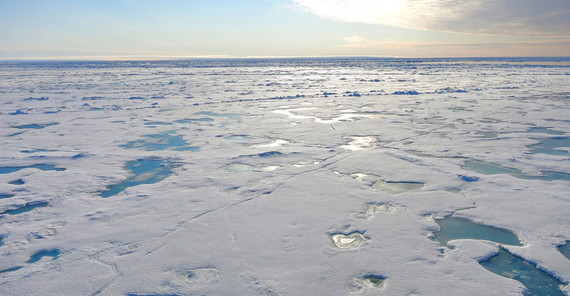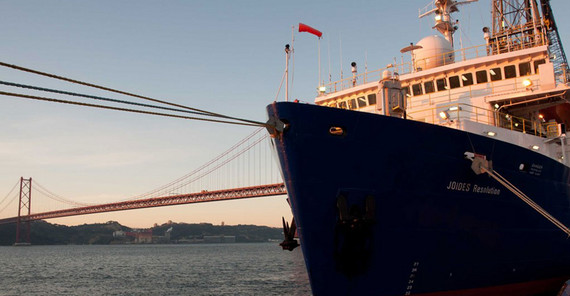The high northern latitudes are by far one of the most sensitive regions on Earth to the effects of global warming driven by anthropogenic greenhouse gas emissions. In fact, the ever more rapid thawing of permafrost in the circum-Arctic realm as well as the increasing ice-sheet melt in Greenland are alarming testimonies to the effect of global climate change on this region.
To evaluate a potential connection between climate changes in the Mediterranean realm and the high latitude North Atlantic under global warming conditions, the scientific consortiums studied drill cores from the Mediterranean Sea, Gulf of Cadiz and North Atlantic with geochemical methods, covering the time interval 3.6 to 2.7 million years ago. This interval belongs to the Pliocene, a period resembling conditions expected for the near future with elevated greenhouse gas concentrations and small ice-sheets on Greenland. “In fact, we see that especially between 2.9 to 2.7 million years ago, a strong Mediterranean outflow occurred simultaneously to surprisingly warm conditions on the surface of the high-latitude North Atlantic close to Iceland”, states Dr. Kaboth-Bahr. “We then fed our findings into a state-of-the art climate model. This enabled us to virtually step into the ocean and for the first time visualize that the plume of warm waters leaving the Mediterranean Sea via the Strait of Gibraltar in several hundred meters water depth eventually surfaces in the high latitudes of the North Atlantic, creating an oceanic ‘heat-channel’” says Dr. Kaboth-Bahr, who is working at the Institute of Geosciences of the University of Potsdam.
The effectivity of this heat channel directly depends on the strength of the Mediterranean outflow which is ultimately driven by the intensity of the African monsoon. While this connection seems unexpected at first sight, it is evident when considering the origin of the Mediterranean waters that flow into the Atlantic, i.e. the eastern Mediterranean Sea. Here, hot and dry conditions lead to strong evaporation, thereby raising the salt content of the surface waters. In winter these water masses cool, become denser and flow west at greater depths, where they exit the Mediterranean Sea through the Strait of Gibraltar. If strong monsoons in Northeast Africa increase the flow of fresh water into the Mediterranean Sea, e.g. via the River Nile, it inhibits the formation of these dense, salty waters and weakens the Mediterranean outflow.
Conversely, the very dry conditions in the eastern Mediterranean that current climate models unanimously predict for the near future, will boost the salt content in the surface waters and thus strengthen the Mediterranean outflow and hence high-latitude warming via an active heat subsurface heat channel.
Based on these results, the authors conclude, the inferred mechanism might thus represent an important feedback loop between subtropical and boreal climatic regions that might amplify high latitude warming in the near future.
Link to Publication: Kaboth-Bahr, S., Bahr, A., Stepanek, C. et al. Mediterranean heat injection to the North Atlantic delayed the intensification of Northern Hemisphere glaciations. Commun Earth Environ 2, 158 (2021). https://doi.org/10.1038/s43247-021-00232-5
Images:
joides_resolution_a.bahr.jpg: The drillship R/V Joides Resolution, used to drill the cores investigated in this study, at berth in the harbor of Lisbon (copyright: André Bahr, Heidelberg University).
meereis_s.kaboth-bahr.jpg: With progressing global warming, sea ice melting across the Arctic Ocean is expected to further increase and might be even accelerated by the newly described oceanic heat-channel that pumps heat into the high northern latitudes. (copyright: Stefanie Kaboth-Bahr, University of Potsdam).
Contact: Dr. Stefanie Kaboth-Bahr, Institute of Geosciences, Tel.: +49 331 977-6358, kabothbahruuni-potsdampde
Media Information 11-08-2021 / Nr. 069


